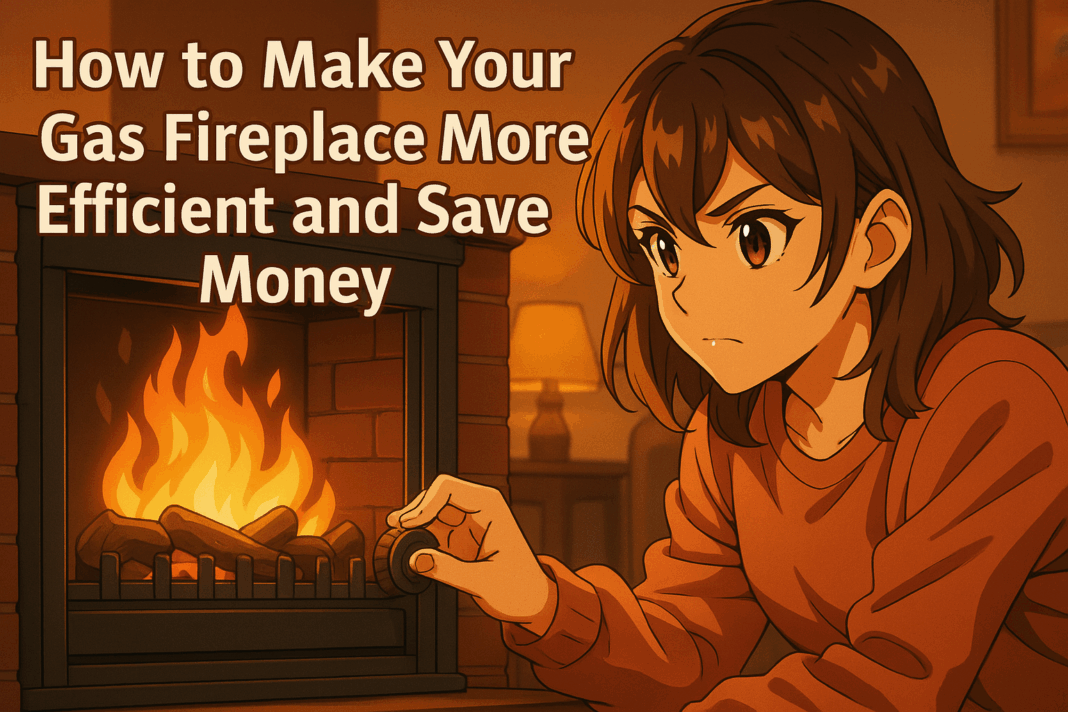Fireplaces are great, but when you use them too much, the bills surely disappoint. Whether you’re in the market for a new setup or trying to get more out of the one you’ve got, learning how to run your fireplace efficiently can make a big difference in your power bills.
Let’s walk through how to get the most warmth for the least cost, without sacrificing the comfort or mood that only a fireplace can bring.
How Efficient Are Gas Fireplaces, Really?
Gas fireplaces have evolved significantly from the basic old-school heaters. Today’s models are designed to heat more with less energy. Some units boast efficiency ratings of up to 90%. In that case, most of the heat will stay in your room instead of going out of the chimney.
But not all gas fireplaces are made equal. The efficiency depends on things like the age of the unit, whether it’s vented or vent-free, and how often you run it. For example, a freestanding gas fireplace typically produces more usable heat than a traditional built-in fireplace with an open front, which can lose heat through the flue.
Make Sure It’s the Right Size for Your Space
One of the most common mistakes people make is choosing a gas fireplace that’s either too big or too small for their room. If it’s oversized, you’ll be paying more to run it than you need to. If it’s too small, you’ll end up cranking it up and still not getting warm enough.
As a general rule, a room that’s about 90 to 100 square metres would need something around 5 to 6 kW. But other things matter too, ceiling height, insulation, and whether it’s an open-plan space or not.
Zone Heating Is Your Friend
If you’ve got central heating, you are surely heating areas of your home that you rarely use. Gas fireplaces are great for zone heating, where you just heat the room you’re in instead of the whole house. Want to keep it cozy in the living room without roasting the bedrooms? Use your fireplace and dial down the central heat. It’s a simple trick that can really cut down your bills.
Make the Most of Your Timer and Thermostat
A lot of newer fireplaces come with programmable timers and built-in thermostats. These aren’t just nice extras, they’re tools to save you money. Setting a timer for early mornings or cooler evenings lets you warm up the space only when you need it. A thermostat will help keep the temperature steady without the fireplace running longer than it should.
Keep the Heat In by Sealing the Room
It doesn’t matter how efficient your gas fireplace is if the room can’t hold onto the heat. Gaps around windows, doors, or even the fireplace itself can quietly let warmth slip away. No need to rip the place apart. Just add some draft stoppers, hang heavier curtains, or run weather sealing tape along the trouble spots. Small fixes, big difference.
If your fireplace uses a traditional flue, you can also try going with a new modern fireplace flue kit. It helps reduce heat loss and gives you a better, cleaner burn.
Get It Checked Once a Year
Even if everything looks fine on the outside, it’s still worth booking a professional check-up once a year. A quick inspection can catch issues like blocked vents, loose connections, or worn-out parts that may affect performance.
If you live in a colder part of New South Wales, like Sutton Forest, it’s even more important to stay on top of servicing. A well-maintained fireplace runs smoother and warms your space faster, with less gas wasted.
Vent-Free or Vented? What’s Better for Your Home
Choosing between vent-free and vented models depends on your home and how you use your fireplace. Vent-free gas fireplaces tend to keep more heat in since there’s no chimney to lose it through. But they’re not legal everywhere and must be used in rooms with good airflow.
Vented fireplaces, especially direct vent types, still offer great efficiency and are often the safer choice for maintaining air quality. If you’re not sure which kind you’ve got, it’s worth checking. The right setup can save you more over time.
Don’t Treat It Like Central Heating
Gas fireplaces are for quick heating. But you shouldn’t use it for full-day usage. They eat up the gas, and you will run out of gas within a day if you keep it on for a long time.
Instead, fire it up when the room starts to feel chilly, then lower the flame or switch it off once it’s warm. Some models let you adjust the flame, which helps you control how much gas you’re using without losing comfort.
A Few Small Tweaks Can Make a Big Difference
Making your fireplace work harder doesn’t mean using more gas. It means using it smarter. Add a draft stopper, clean the glass, check the flue, or tweak your timer settings; it all adds up.
You don’t have to give up the cosy vibe to save money. Just a few changes can keep your home warmer, your fireplace running smoother, and your winter bills a little less painful.



